Our time in Arenal was an unqualified success, but it was time to move on to the next destination of our whirlwind Costa Rica trip: the vast marshland of Caño Negro. The Caño Negro Wildlife Refuge is located along the banks of the Río Frío in far northeastern Costa Rica, very close to the border with Nicaragua. Though it's located in the middle of extensive farmlands the floodplains of the river still have a good bit of remaining wetland and flooded forest. A boat ride through Caño Negro is a must-do for any visiting birders, as it goes through an impressive array of different habitats, with vast numbers of potential species and a good number of specialties that are hard to see anywhere else on the usual birding circuit.
The afternoon of February 23 we started the 3-hour drive from Arenal to Caño Negro, mostly through a dry landscape of cow pastures and scattered woodlands, with enough fragmented habitat left for us to see the occasional Collared Aracari or Keel-billed Toucan along with open country birds like Grey Hawks and the occasional Harris's Hawk. The biggest excitement of the trip came when I spotted a Bat Falcon perched along the side of the road- a much-wanted lifer for me and somewhat of a nemesis bird for Tom- especially since we'd just barely missed it earlier that morning at Sky Adventures.
 |
| Bat Falcon! |
There was only an hour and a half of daylight left by the time we got to the Caño Negro area, and we decided to make a quick stop at the Medio Queso Wetlands a bit to the north. Part of the expansive marshland extending south from Lake Nicaragua, Medio Queso is a well-known spot for a few birds that are difficult to see in Caño Negro (and no, I have no idea where cheese comes into the picture). We spent a very enjoyable half hour or so birding along a little dirt road running through the wetlands, and saw everything we were looking for- a gorgeous (and surprisingly showy) Pinnated Bittern, a Black-collared Hawk perched next to the road, a brilliantly colored Purple Gallinule, and a Green-breasted Mango right above our heads. A couple of Nicaraguan Grackles flew by, a regional endemic that's only found in the Lake Nicaragua area.
 |
| Pinnated Bittern |
 |
| Black-collared Hawk- pretty flashy although it really just reminds me of a Brahminy Kite |
 |
| Purple Gallinule |
 |
| Green-breasted Mango |
 |
| Nicaraguan Grackle |
 |
| Groove-billed Ani |
 |
| Great Egret |
 |
| Grey-crowned Yellowthroat |
 |
| Pale-vented Pigeon |
 |
| The Medio Queso wetland- the hills in the distance are in Nicaragua |
With the last bits of daylight we headed westwards toward the town of Caño Negro itself, where the next day's boat trip would be departing. The 20-kilometer Caño Negro access road is a very good birding spot in and of itself, with lots of great grassland birds in the daytime and an impressive selection of possible owls in the evening. The first couple of spots we stopped along the road were fairly quiet, though we did have a feeding Blue-chested Hummingbird, a Wood Stork in tiny pond, and a very distant Fork-tailed Flycatcher with some impressive tail plumes. A bit further down Josh spotted a brilliant Red-breasted Meadowlark in a row of trees, one of my biggest targets for this part of the trip. As the sun was setting we finally found a Nicaraguan Seed Finch, another local endemic, in the fields near the road, which was soon joined by a Ruddy-breasted Seedeater and a couple of Olive-crowned Yellowthroats.
 |
| Red-breasted Meadowlark |
 |
| Nicaraguan Seed Finch |
 |
| The local subspecies of Olive-crowned Yellowthroat is sometimes split as Chiriqui Yellowthroat |
 |
| Fork-tailed Flycatcher |
 |
| Northern Tropical Pewee |
 |
| Sunset along the Caño Negro access road |
Once the sun set we started to cruise around or look for night birds, another specialty of the access road. At the bridge over the Río Frío we found our first target of the night: an enormous
Great Potoo perched on a lamp post! We had amazing looks at it and another bird (possibly its mate) as they hunted around the bridge, perching on signs and light posts and occasionally fixing us with their otherworldly stares. This was another most-wanted bird of mine for the trip, and we were all thrilled.
 |
| Mangrove Swallow |
 |
| Great Potoo |
Unfortunately, that was the high point of the night- aside from the Potoo success, we saw precisely zero owls despite several hours of cruising up and down the road and searching with flashlights and thermal cameras. The few birds we did see turned out to be either Bare-throated Tiger Herons or yet more Great Potoos. In fact, we had what was Josh's highest-ever count of Great Potoo (eight!), but whatever made the potoos come out in force had the owls all bunkered down for the night- I suspect it's because it was a full moon.
We had dinner at a decent restaurant along the road into Caño Negro, then spent the night at a cheap lodging house located in town. The next morning before sunrise we walked down to the pier along the river and met Chambita, our boat driver and guide for the day. Chambita is possibly the best-renowned bird guide at Caño Negro, and it's well deserved- he was truly excellent, and it quite literally the birdiest morning of my life.
We departed the dock as the sun was just starting to rise, and made our way upriver. Chambita stopped for a strange-looking Boat-billed Heron in the pre-dawn light, and there were several Rufous-naped Wood Rails along the shore of the river, along with many Little Blue Herons, Anhingas, Neotropic Cormorants, and other water birds.
 |
| Boat-billed Heron |
 |
| Russet-naped Wood Rail |
 |
| Scorpion Mud Turtle |
 |
| Sunrise at Caño Negro |
A ways up the river Chambita pulled the boat up to the shore and we walked along a muddy path until we got to a pool of standing water ringed by greenery. The purpose soon became clear: there was an Agami Heron feeding next to the water! Herons are fun but Agami Herons are on the next level- slim, shy, blue-and-purple specters that are found only in the darkest and most secluded waterways of Central and South America. They're one of the most sought-after birds in the world and it was easy to see why as we watched it skulking along the river banks, always staying in the middle of the vegetation and only rarely coming into the open. It was far better looks than we could have hoped for, and yet another lifetime birding highlight on a trip with many of them. We were so concentrated on the heron that we almost missed the Green-and-rufous Kingfisher perched next to the pool, another difficult Caño Negro target.
 |
| Agami Heron |
 |
| Green-and-rufous Kingfisher |
The day had already been a success after just an hour of birding, but there was a great deal more of Caño Negro to see. Back in the boat, we continued upriver to look for some of the birds that liked to hang out in the riverine forest. The river was full of wildlife- herons, cormorants, anhingas, and almost the full suite of kingfishers with Ringed Kingfishers, Green Kingfishers, Amazon Kingfishers, and a few adorable American Pygmy Kingfishers. I was actually a little disappointed not to see Belted Kingfisher, as that would have given us all New World kingfishers in a single day. There were a good number of forest birds too- a day-roosting Common Potoo, a few Yellow-bellied Tyrannulets, a tree full of Masked Tityras, a flyover from a Grey-headed Kite, and even a small mixed flock that included a pair of gorgeous, weird Bare-crowned Antbirds. Another highlight was a pair of tiny, fat Pied Puffbirds that Chambita was able to find us. On the non-bird front there were dozens of Spectacled Caimans sunning themselves on the muddy riverbanks and Green Iguanas up in the trees, while Chambita pulled the boat over to show us some adorable Proboscis Bats roosting on a tree trunk.
 |
| Amazon Kingfisher |
 |
| Green Kingfisher |
 |
| American Pygmy Kingfisher |
 |
| Anhinga |
 |
| Common Potoo |
 |
| Masked Tityra |
 |
| Russet-naped Wood Rail |
 |
| Bare-crowned Antbird |
 |
| Pied Puffbird |
 |
| Yellow-bellied Tyrannulet |
 |
| Spectacled Caiman |
 |
| Green Iguana |
 |
| Nicaraguan Slider |
 |
| Proboscis Bats |
We motored back downriver towards where we could see some wetland and open country birds. The most frustrating sighting of the day was a single Snowy Cotinga that flew across the river right in front of us so quickly that Tom and I were the only ones to see it. It was a very, very good bird but an unsatisfying way to see it, especially since not everyone could share in it. Near the dock we got out again and climbed up an observation tower to scan the nearby fields and wetlands for interesting birds- particularly raptors and Jabiru. There weren't any of those around, but we did have a perched White-tailed Kite and a Common Tody-Flycatcher around the tower. In the fields nearby we heard several White-throated Crakes and a Grey-breasted Crake but none of them came into view.
 |
| Common Tody-Flycatcher |
 |
| White-tailed Kite |
 |
| The view from the lookout tower |
Back in the boat, we continued downriver toward an area of open marshland. The Anhingas and Neotropic Cormorants followed us the whole way down, and Chambita pointed out a single Pacific Screech Owl roosting on branch directly above the river. Further down Josh spotted a Sungrebe making its way along the margin of the river. Sungrebes do look like grebes or rails but are actually finfoots (finfeet?), a strange family of water birds with only two other representatives in Africa and Asia. That was yet another new family for me, and another bird highlight.
 |
| Neotropic Cormorant with some sort of catfish (Rhamdia sp.) |
 |
| Pacific Screech Owl |
 |
| Sungrebe! This one is a female, which are more brightly colored than the male. Males are the main caretakers for the chicks, and have special pockets under their wings that they use for transporting their babies while swimmng. |
 |
| Green Basilisk |
 |
| Birding along the river |
Chambita pulled us into a little lagoon that was absolutely hopping with bird life- Bare-throated Tiger Herons, Great Egrets, Snowy Egrets, Tricolored Herons, Little Blue Herons, Blue-winged Teals, Semipalmated Plovers, Least Sandpipers, Wood Storks, Ringed Kingfishers, and more. A single Lesser Yellow-headed Vulture flew over, a bird I hadn't seen since I was in Bolivia almost 15 years ago in my pre-birding days, and Hilary spotted us another Collared Plover. We scanned yet again for a Jabiru but with no luck.
 |
| Blue-winged Teal |
 |
| Northern Jacana |
 |
| Semipalmated Plover |
 |
| Ringed Kingfisher |
 |
| Wood Stork |
 |
| Lesser Yellow-headed Vulture |
Chambita took us to a few more lagoons down the river in search of Jabiru and other interesting birds. The first held hundreds of Black-necked Stilts and an extremely distant American Golden Plover (a rare bird for Costa Rica), and the second held a bunch of peeps including Least Sandpipers, Pectoral Sandpipers, Semipalmated Sandpipers, and a pair of Stilt Sandpipers, but alas no Jabiru. In a little patch of forest we found a Smoky-brown Woodpecker and an Olivaceous Piculet, and we spotted a Black-headed Trogon perched right above the river. On the way back upriver we found another beautiful Sungrebe.
 |
| Smoky-brown Woodpecker |
 |
| Olivaceous Piculet |
 |
| Black-headed Trogon |
 |
| Sungrebe |
 |
| Pasture Skipper |
 |
| Orange-barred Sulphur |
 |
| Swift Crab Spider |
By then it was almost noon, and Chambita had been nice enough to go over his usual time limit to get us even more birds. We motored back upriver, stopping once more in the first lagoon where there was a Limpkin feeding by the side of the water, another family lifer for me. A Bare-throated Tiger Heron was sunning itself there as well in possibly the silliest pose I've ever seen a bird making, looking like some sort of mafioso issuing a challenge to another gang. A few Collared Aracaris flew over, adding to our already burgeoning day list. In the end we finished with a whopping 163 species in a few hours of birding in the morning, by far my biggest-ever checklist and an example of what's possible at Caño Negro with a great guide and really good birding companions.
 |
| Limpkin |
 |
| Bare-throated Tiger Heron being dramatic |
 |
| A properly green Green Iguana |
We docked the boat back in Caño Negro town, where Chambita showed us the roosting spot for a Black-and-white Owl, slight consolation for our complete owl dip the previous night. There was another Bat Falcon soaring high above us, and many Olive-throated Parakeets hanging out in the trees of the village square. We bid our goodbyes to Chambita and had lunch at a nice (but overpriced) restaurant in town where we were surprised to find a gorgeous Golden-olive Woodpecker foraging in the trees nearby. It was mid-afternoon by the time we made our way out to the main road, and swelteringly hot and sunny. We did stop for another Nicaraguan Seed Finch and a Red-breasted Meadowlark perched up on a post eating a katydid, but it was difficult to take pictures with the heat haze.
 |
| Bat Falcon |
 |
| Black-and-white Owl |
 |
| Olive-throated Parakeet |
 |
| Golden-olive Woodpecker |
 |
| Nicaraguan Seed Finch |
 |
| Red-breasted Meadowlark |
 |
| Eastern Meadowlark |
 |
| Ruddy Ground Dove pretending to be a Plain-breasted Ground Dove |
Caño Negro had been a success beyond anything we had hoped for, and it was yet another of my favorite birding stops of the trip. There's a reason it's a must-do on the Costa Rica birding itinerary, and I'm already looking forward to another visit when I have the chance.










































































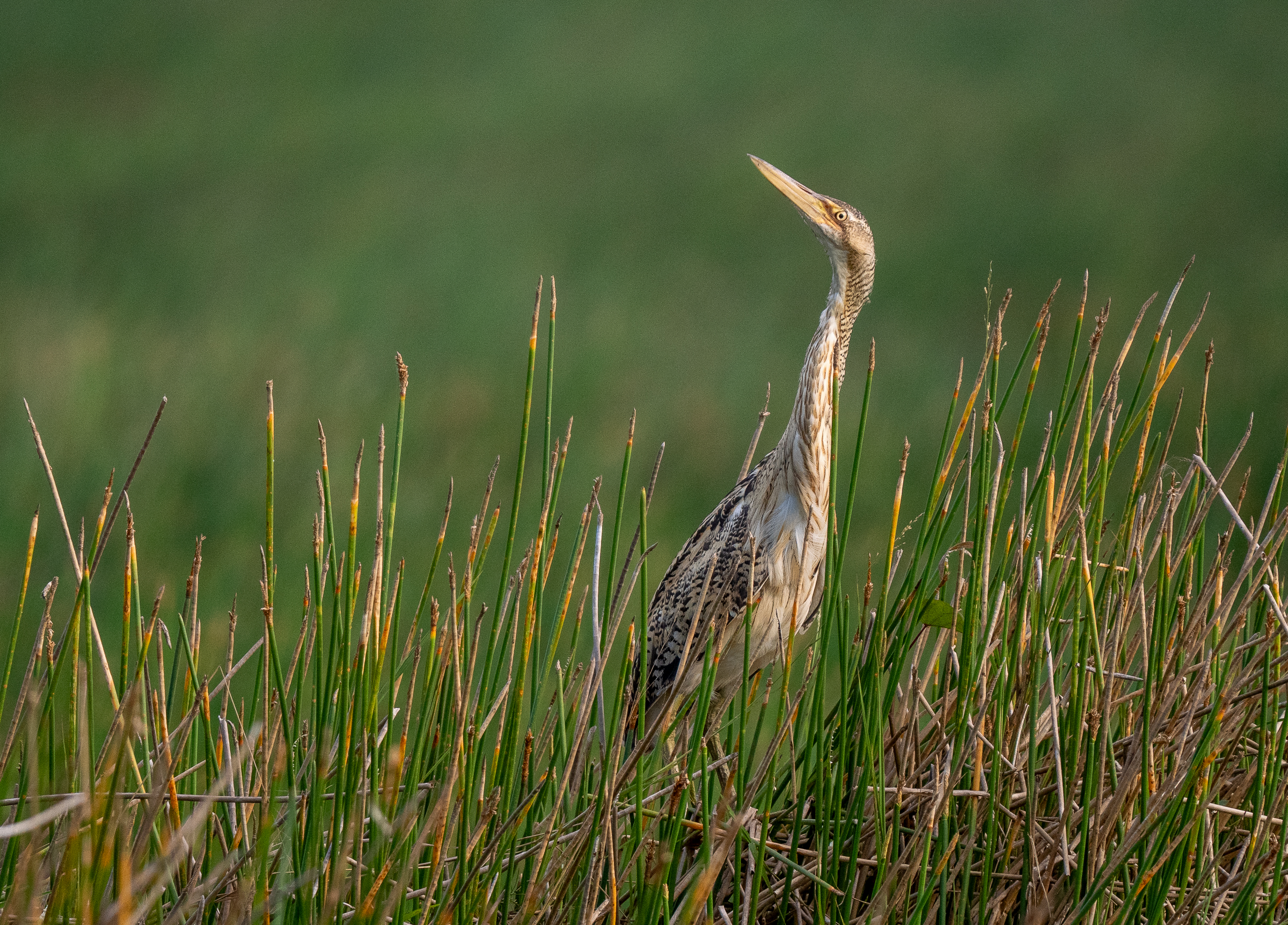














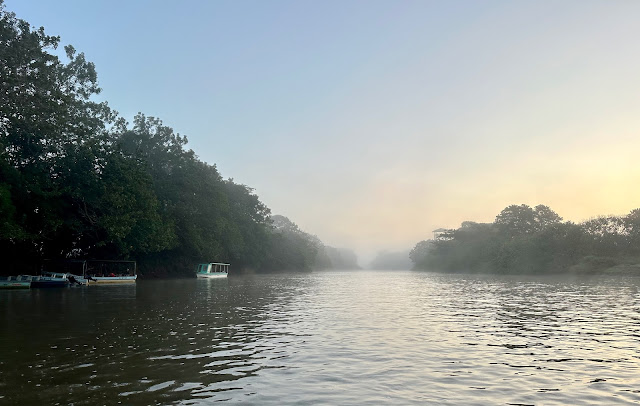




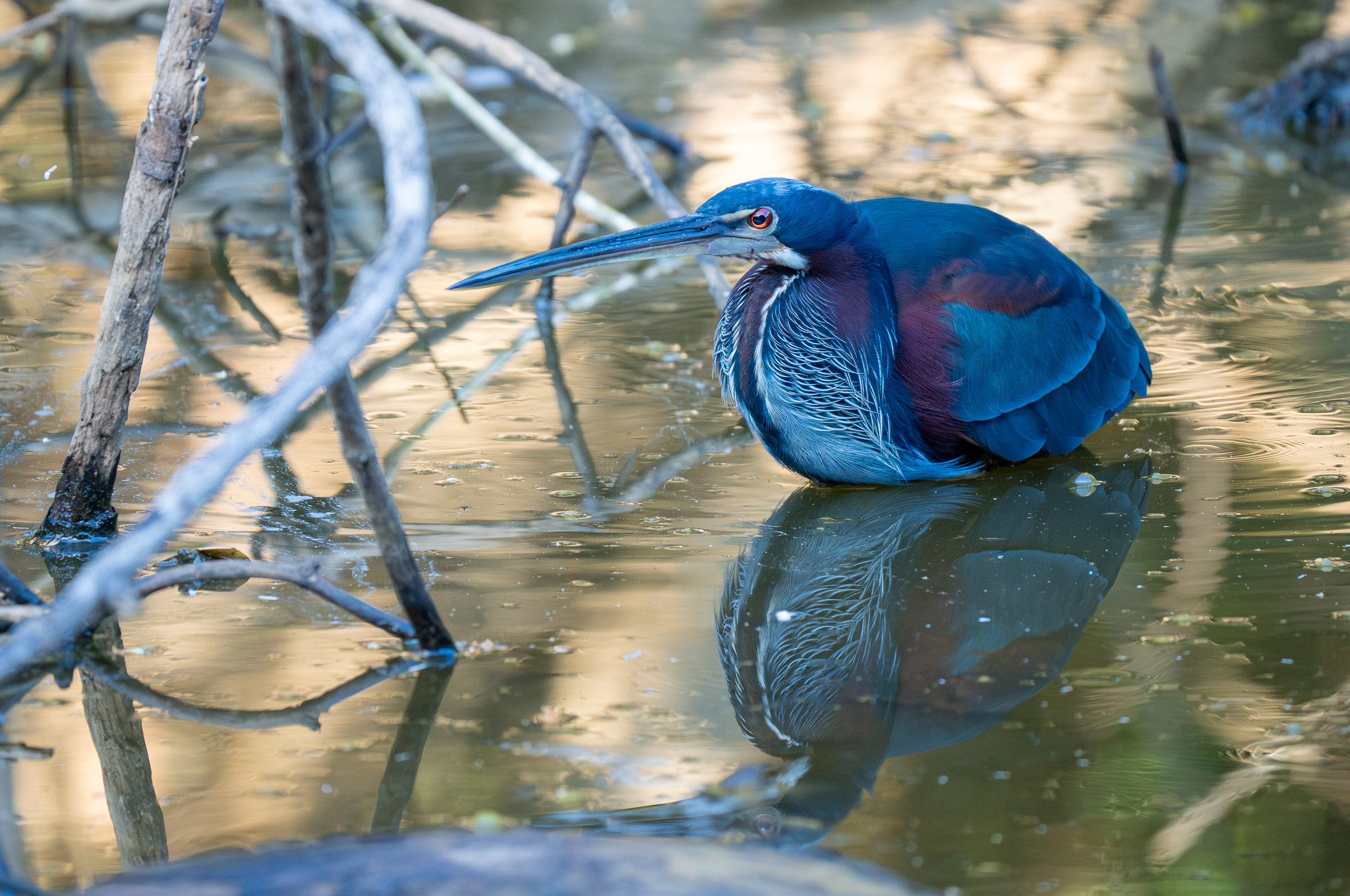
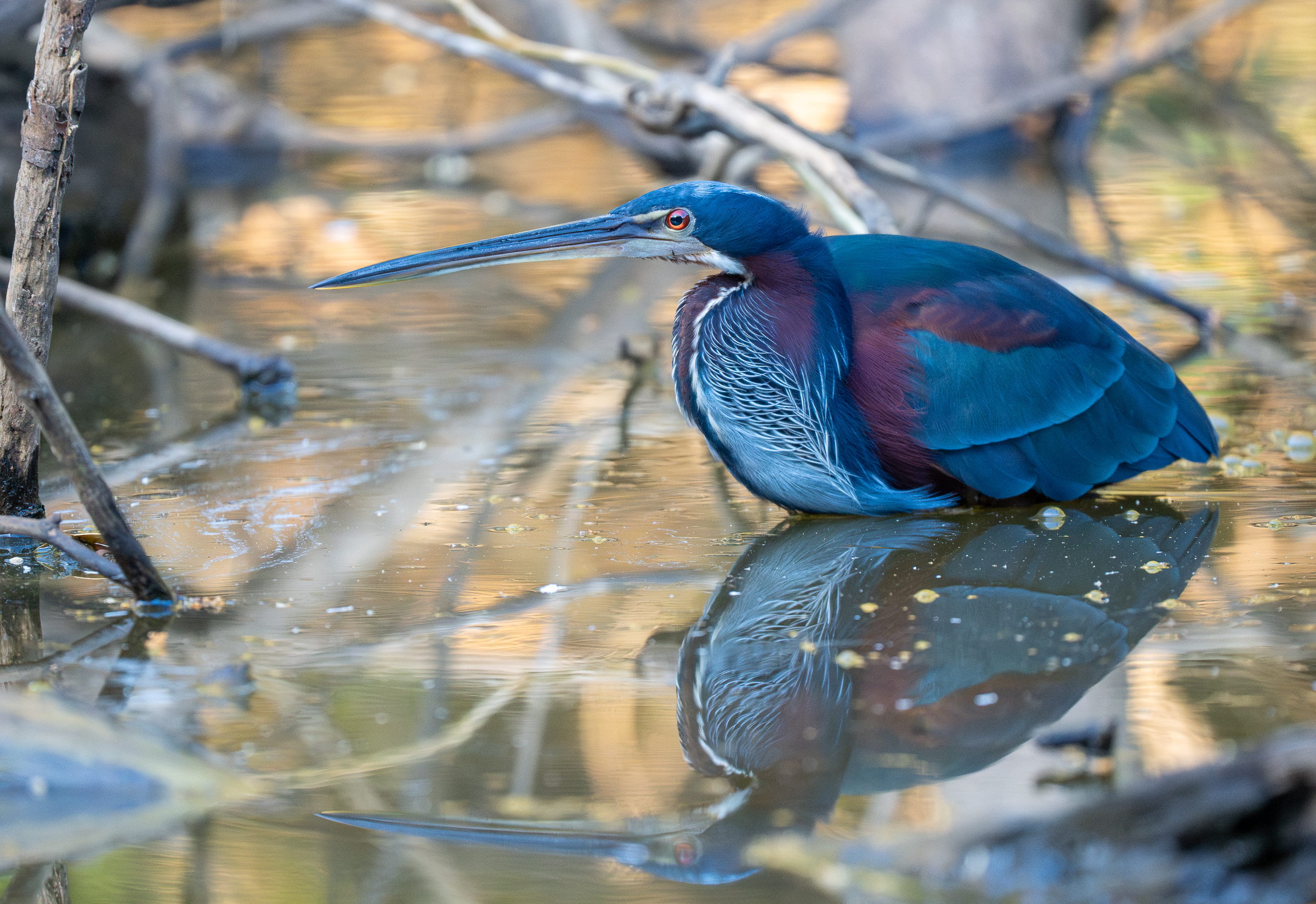

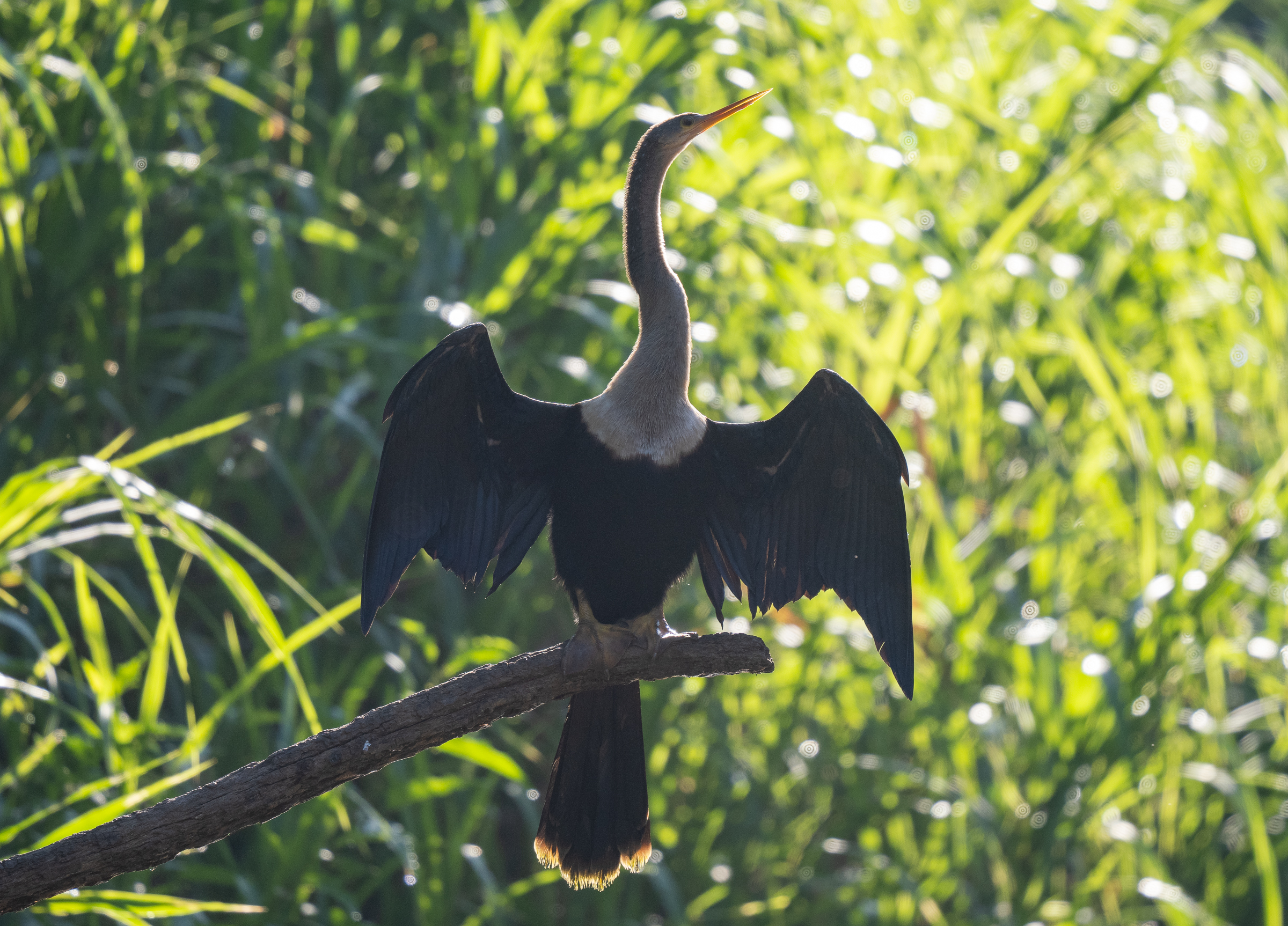



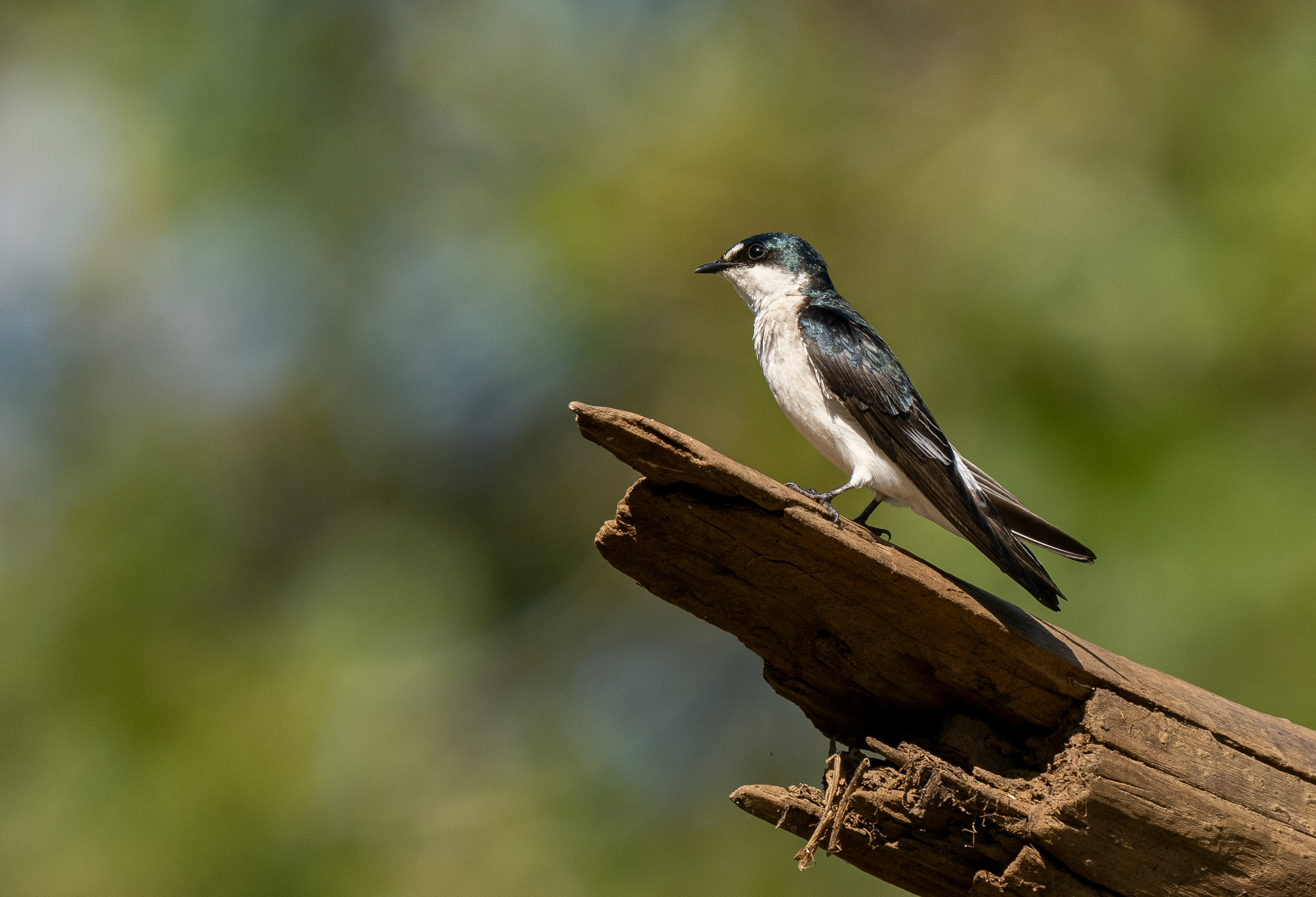





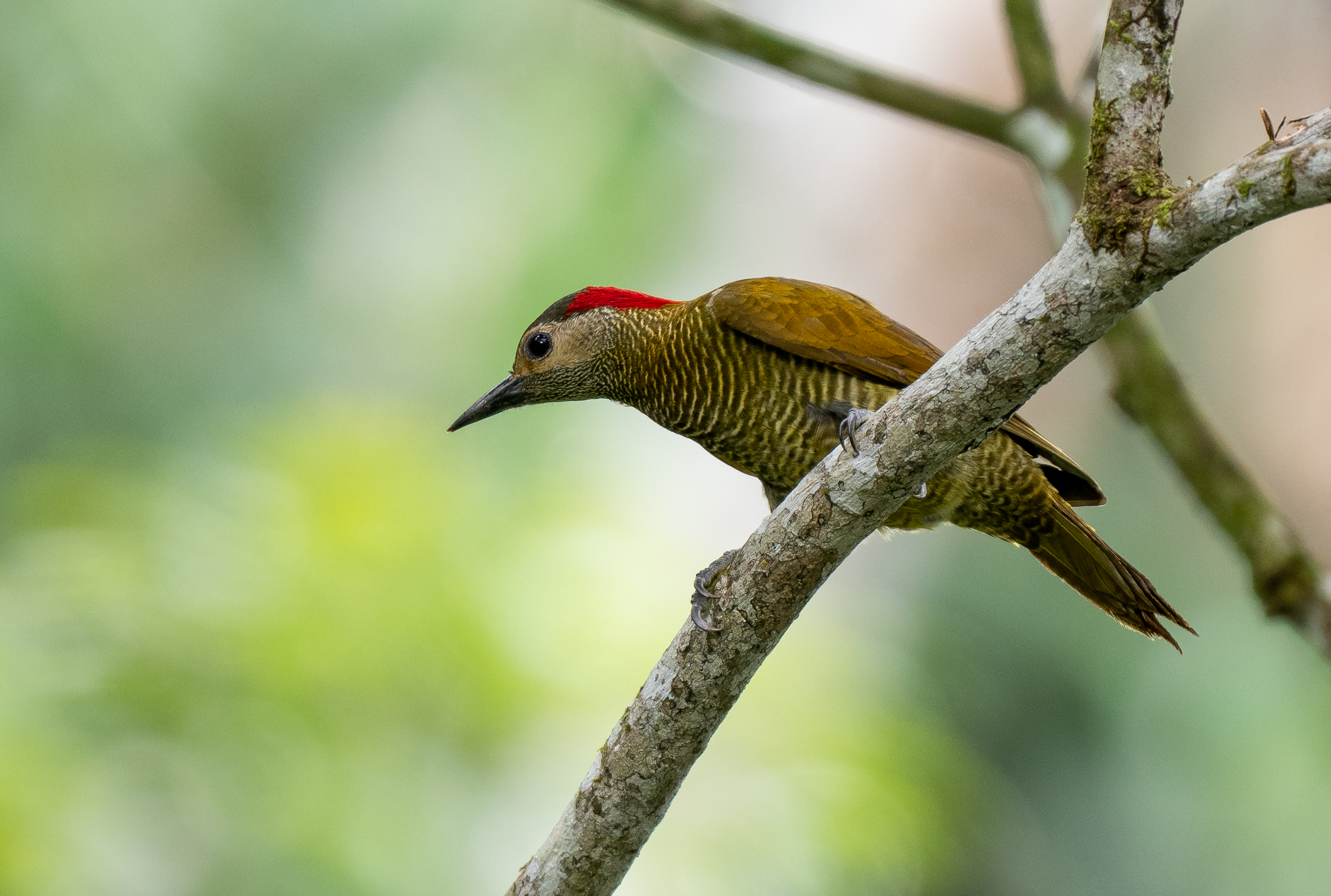





Comments
Post a Comment